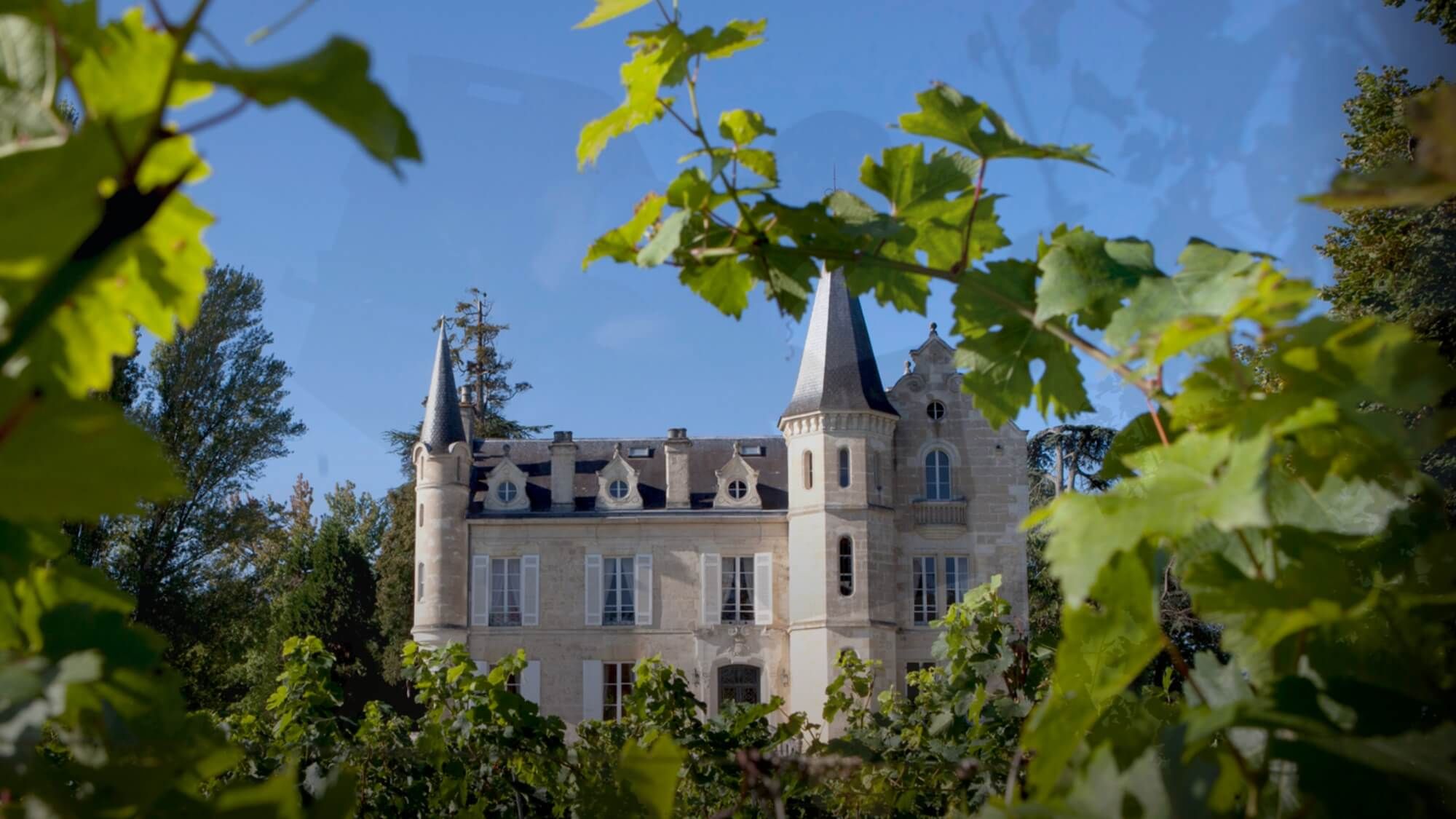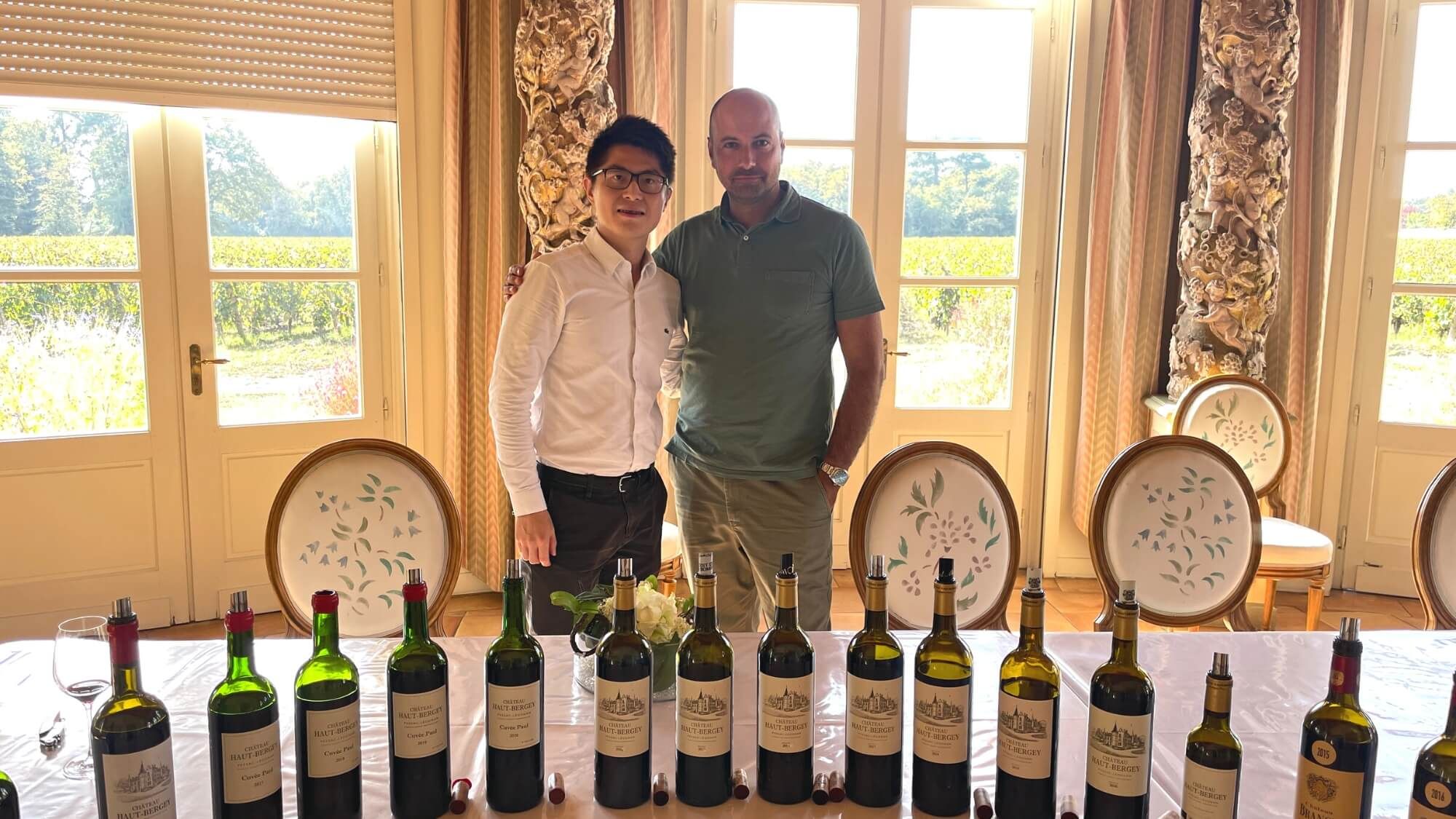AMA Vertical Tasting
Château Haut-Bergey

My first encounter with Château Haut-Bergey was at a bistro in Bordeaux. I noticed it was reasonably priced and decided to give it a try with some friends. Little did I know that as soon as I uncorked the bottle, I would be captivated by its freshness, vibrance, and delightful floral and fruity notes.
Since then, whenever I spot Château Haut-Bergey at a bar, I must take a bottle to share with friends. It’s no exaggeration to say that whether you’re a wine professional or an enthusiast, everyone has something positive to say about Château Haut-Bergey.
A few days ago, I had the chance to visit Château Haut-Bergey, where I had an engaging conversation with the owner, Paul GARCIN, and the cellar master, François PROUTEAU, for nearly six hours. We tasted nearly 20 different wines with diverse styles. As we left, we all felt that the meeting was too short, promising to meet again soon and indulge ourselves in the wines, albeit responsibly.

In my opinion, Château Haut-Bergey is one of the “purest natural wines” in Bordeaux, and there are two key reasons for this assertion.
Firstly, compared to many pretenders passing off “natural wine” as undrinkable, Château Haut-Bergey boasts an exceptionally clear fruitiness. Even after aging for over eight years, there are no noticeable faults.
Secondly, Château Haut-Bergey is exceptionally pure. Whenever you open a bottle, it immediately bursts forth with a rich bouquet of floral and fruity aromas, requiring no aeration. Its texture is smooth, making it an ideal wine for a casual party with friends.
The distinctive style of Château Haut-Bergey is influenced by two key factors. First, Château Haut-Bergey’s soil contains a relatively high proportion of sandy soil. Grapes grown in this soil have thinner skins, but nice aromas. With a gentle maceration, especially after a cold soak, they become fragrant, smooth, and quite pleasing. However, what truly sets Château Haut-Bergey apart is the second crucial factor: biodynamic farming.

The current owner, Paul GARCIN, previously worked in the music and film industry and is a young proprietor with a strong affinity for nature and a spirit of exploration. His wife, Marilène, is a nutritionist with unique insights into ecology. They developed a deep interest in biodynamic farming early on and maintained close connections with many prominent biodynamic wineries. Therefore, when they took over the estate in 2014, they made a challenging decision: to transition to biodynamic farming.
In the first year of the transition, they were fortunate to have excellent weather conditions in 2015, which not only allowed them to start organic cultivation successfully but also reinforced their ambition for biodynamics.
However, the following three years were harsh for Château Haut-Bergey.
In 2016, the vineyards were affected by spring mildew.
In 2017, frost caused a significant reduction in yield.
In 2018, spring mildew once again swept through the entire vineyard overnight, dealing a severe blow to the couple’s biodynamic strategy. It’s worth emphasizing that transitioning to biodynamic farming is by no means easy. If you’re not prepared for the possibility of crop failure, it’s best not to undertake such a venture lightly.
After making changes for about 5-6 years, the grapes at Château Haut-Bergey are now growing well using a “biodynamic” method.
In 2022, even with hot and dry weather for a couple of months, the vineyard stayed strong. Though the soil doesn’t hold water well, the grapes didn’t have much trouble with dryness. Paul noticed that after using the BD501, the grapevines looked healthy and happy in the sunlight, which made him very pleased.
In 2018, after obtaining organic and Demeter certifications, Château Haut-Bergey successfully received Biodyvin certification the following year, becoming the first biodynamic certificated estate in the Pessac-Léognan.

Regarding winemaking, Château Haut-Bergey also adheres to a strict “biodynamic philosophy.”
Paul told me that he aims to craft wines that are as close to “completely natural” as possible. To achieve this, he places great emphasis on cellar hygiene and the control of the microbial environment, enabling successful fermentation without the addition of sulfur dioxide.
In terms of aging, Château Haut-Bergey exclusively employs 300-liter old oak barrels, along with two large oak barrels and eight Tava clay amphoras. This approach minimizes intervention during the aging process, allowing the wine to express itself freely.
Based on my tasting that day, the standout vintages were 2015, 2018, 2019, and 2020. Particularly in the case of the 2019 vintage, you can truly sense the Bordeaux winemakers’ correct interpretation of “natural wine.”
Additionally, I would like to recommend trying two special cuvées from Château Haut-Bergey. One is the “Bergey” cuvée, made from 100% Merlot, which gave me a glimpse of what an outstanding Saumur-Champigny might taste like.
The other is the “Cuvée Paul” cuvée, which I highly recommend. This wine follows the exact same winemaking philosophy as Château Haut-Bergey but without any oak barrel. As a result, it offers the purest, most authentic experience of Château Haut-Bergey and the winemaker Paul’s winemaking philosophy.
Alright, finally, I’d like to add one more thing – excellent natural wine should NOT have a foul odor. So, be sure to keep a keen eye out, don’t be easily misled!
Until next time, cheers!
